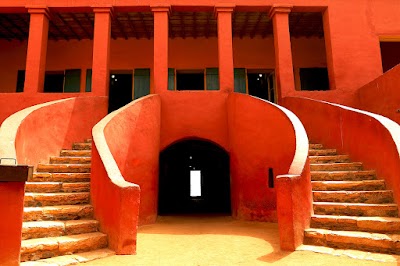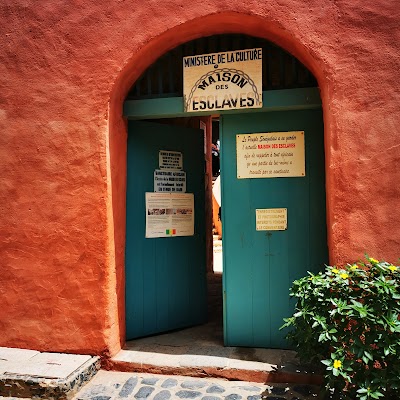La Maison des Esclaves (La Maison des Esclaves)
Related Places
Overview
La Maison des Esclaves, or the House of Slaves, located in the Kayes Region of Mali, is a site of profound historical significance. This haunting landmark serves as a sobering reminder of the transatlantic slave trade, which had a devastating impact on millions of lives. For foreign tourists, visiting this site offers an invaluable opportunity to delve into a critical chapter of human history.
Historical Significance
Constructed in the 18th century on Gorée Island, La Maison des Esclaves served as one of many holding stations where enslaved Africans were detained before being transported across the Atlantic to the Americas and the Caribbean. The conditions in these holding stations were notoriously inhumane, with men, women, and children confined to cramped, dark cells, often enduring prolonged waits with little food or water. This site stands as a testament to the suffering and resilience of those who were caught in the throes of this tragic history.
Architectural Design
The architectural design of La Maison des Esclaves is both striking and somber. Its two-story building, with its iconic dark façade and iron shackles, transports visitors back to a time when it was a bustling center of the slave trade. Among its most poignant features is the infamous "Door of No Return," a small doorway through which countless enslaved individuals passed, never to see their homeland again. Standing in this doorway, one cannot help but feel the weight of sorrow and despair experienced by those who walked through it.
Education and Remembrance
Beyond its historical architecture, La Maison des Esclaves serves as a crucial site for education and remembrance. It functions as both a museum and a memorial dedicated to the victims of the slave trade. Inside, visitors will find exhibits that include artifacts, documents, and narratives, providing a vivid account of the horrors faced by enslaved people. Personal stories, in particular, help create a deeper emotional connection, allowing visitors to recognize the individuality and humanity of those who suffered.
Interestingly, the House of Slaves is not merely a relic of the past; it actively engages in discussions about the legacies of slavery. The museum hosts lectures, film screenings, and educational programs that explore themes such as human rights, racial discrimination, and the ongoing impact of slavery on contemporary societies. This makes the site not only a place of reflection but also a springboard for meaningful global conversations.
Guided Tours
For tourists, a visit to La Maison des Esclaves is both enlightening and somber. Knowledgeable guides, often deeply passionate about their history, offer tours in multiple languages, ensuring that the stories and lessons of the site are accessible to all. They provide detailed explanations of the exhibits and historical context, bringing the stark realities of the slave trade to life in ways that books and films often cannot.
Exploring the Surroundings
In addition to the main museum, the surrounding Kayes Region offers visitors a chance to explore other historical and cultural sites. The picturesque landscapes and vibrant local culture provide a striking contrast to the somber history of the House of Slaves. Tourists can immerse themselves in traditional Malian hospitality, enjoying local crafts, music, and cuisine, thereby enriching their visit.
Conclusion
In summary, La Maison des Esclaves is an essential destination for anyone interested in understanding the transatlantic slave trade and its profound impacts. The site stands not only as a memorial to the millions who suffered and perished but also as a valuable space for education and dialogue about ongoing issues related to racial injustice and human rights.
Whether you are a history enthusiast, a student, or simply a curious traveler, La Maison des Esclaves offers a poignant, educational, and unforgettable experience. It urges visitors to remember the past, understand the present, and work towards a better future. This site is not merely a destination; it is a powerful journey into human resilience and the unbreakable spirit of those who endured one of history’s greatest atrocities.




